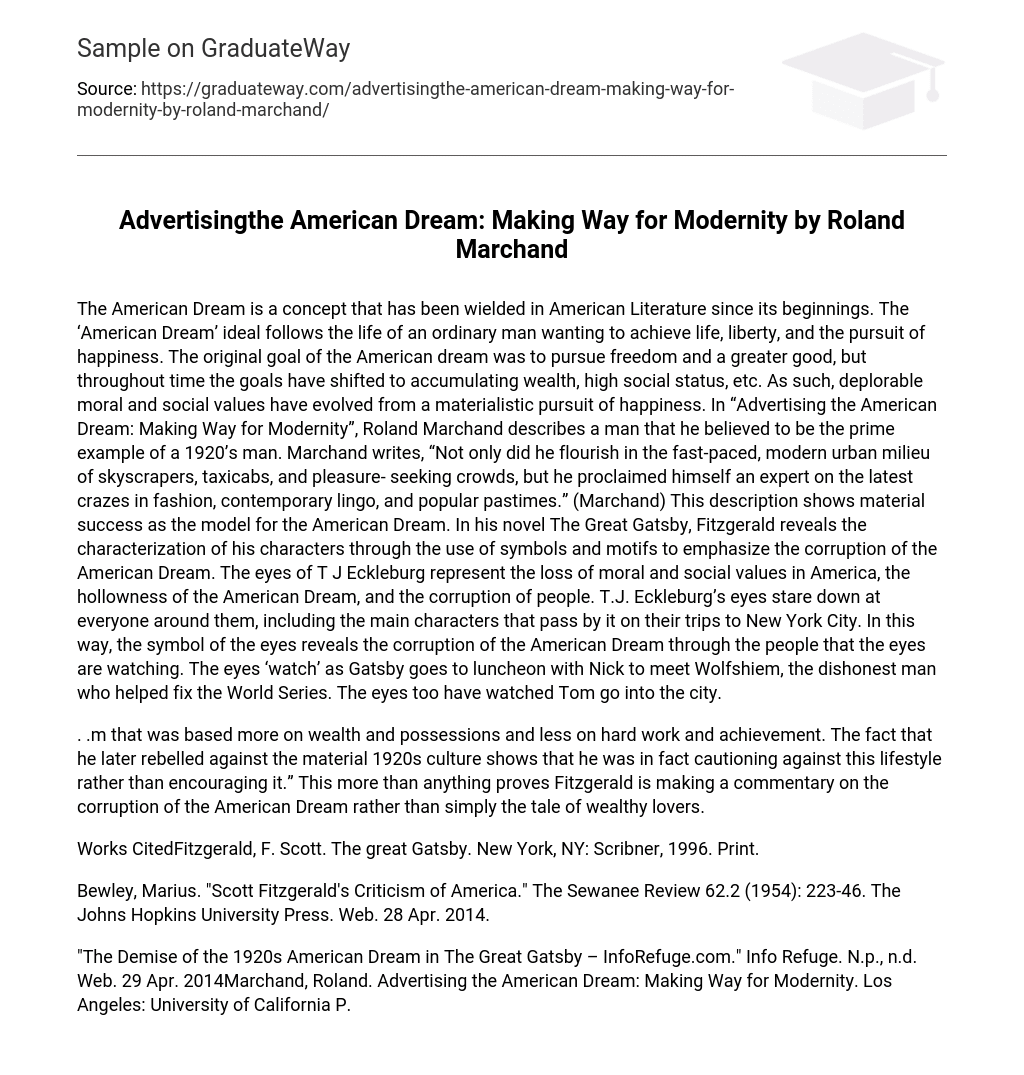The American Dream has been a recurring theme in American Literature since its inception, initially focusing on ideals of freedom and the greater good but gradually shifting towards the pursuit of wealth and social status. This change has led to morally and socially unacceptable values associated with materialism. Roland Marchand, in his book “Advertising the American Dream: Making Way for Modernity,” presents a man from the 1920s as a representation of this era, thriving in a fast-paced, modern urban environment characterized by skyscrapers, taxicabs, and pleasure-seekers. This portrayal depicts material success as an embodiment of the American Dream. In F. Scott Fitzgerald’s novel The Great Gatsby, symbols and motifs are used to highlight the corruption of the American Dream and depict characters’ traits. The eyes of T.J. Eckleburg symbolize America’s loss of moral and social values, as well as the emptiness associated with pursuing the American Dream. These eyes observe everyone who passes by them, including main characters during their visits to New York City where they engage in corrupt activities such as Gatsby accompanying Nick to lunch with Wolfshiem – a fraudulent figure linked to fixing the World Series.
The all-seeing eyes have also observed Tom’s journeys into the city.
. .m that was based more on wealth and possessions and less on hard work and achievement. The fact that he later rebelled against the material 1920s culture shows that he was in fact cautioning against this lifestyle rather than encouraging it.” This evidence emphasizes Fitzgerald’s criticism of the corrupt nature of the American Dream rather than portraying the story as merely about wealthy lovers.
Works Cited Fitzgerald, F. Scott. The great Gatsby. New York, NY: Scribner, 1996. Print.
The author of the article “Scott Fitzgerald’s Criticism of America” is Marius Bewley. It was published in The Sewanee Review in 1954 and can be found on The Johns Hopkins University Press website. On April 28, 2014, the article was accessed.
“The Demise of the 1920s American Dream in The Great Gatsby – InfoRefuge.com.”
Info Refuge. N.p., n.d. Web. 29 Apr. 2014
Marchand, Roland. Advertising the American Dream: Making Way for Modernity. Los Angeles: University of California P.





